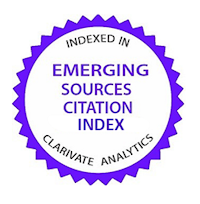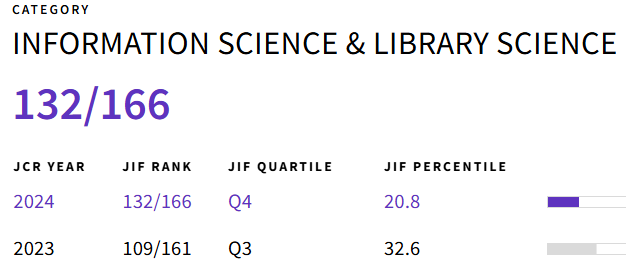OPEN SCIENCE
EVOLUTION OF THE NAME AND THE CONCEPT
Supporting Agencies
- Plan Estatal I D
Abstract
Open science represents a paradigm shift in the way science is conducted that involves performing all stages of scientific research (design, data collection, review, publication, etc.) with an “open” vision. Our aim is to analyze the evolution of the denomination and the concept of open science from its beginnings (e-science, interconnected science, science 2.0, open science). We also want to determine which are the fundamental elements that make up open science. This is a theoretical research based on the selection and analysis of the most important conceptual documents about open science, which have been found in the Scopus and GoogleScholar databases. As a result, it is shown that the denominations have undergone more variations than the concept itself. Regarding the components, open science started with four basic elements (open access, open data, open software, reproducibility) that have been extended to the eight that are considered in the model proposed by OSPP recommendations.
Downloads
Metrics
-
Abstract9714
-
PDF (Español (España))6273
References
ANGLADA, Ll. y ABADAL, E. ¿Qué es la ciencia abierta? Anuario ThinkEPI, 2018, vol. 12, p. 292-298. Disponible en: https://doi.org/10.3145/thinkepi.2018.43
BARTLING, S. y FRIESIKE, S. Towards Another Scientific Revolution. En: Bartling S. y Friesike S. (eds). Opening Science. Springer, Cham: 2014. Disponible en: https://doi.org/10.1007/978-3-319-00026-8_1
CHRISTENSEN, C.M.; RAYNOR, M.E. y MCDONALD, R. What is disruptive innovation? Harvard Business Review, 2015, issue. 21-04-16.
COMISIÓN EUROPEA. Public Consultation: ‘Science 2.0’: Science in Transition (background document). Bruselas: Directorates-General for Research and Innovation (RTD) and Communications Networks, Content and Technology (CONNECT), 2014. Disponible en: <https://ec.europa.eu/research/consultations/science-2.0/background.pdf> [Consulta: 30 de septiembre de 2019].
COMISIÓN EUROPEA. A Digital Single Market Strategy for Europe – COM (2015) 192 final: About Shaping the Digital Single Market. Bruselas, 2015. Disponible en: <https://ec.europa.eu/digital-single-market/en/news/digital-single-market-strategy-europe-com2015-192-final> [Consulta: 30 de septiembre de 2019].
COMISIÓN EUROPEA. Research and Innovation. Validation of the results of the public consultation on Science 2.0: Science in Transition. Bruselas, 2015. Disponible en: <https://ec.europa.eu/research/consultations/science-2.0/science_2_0_final_report.pdf> [Consulta: 30 de septiembre de 2019].
COMISIÓN EUROPEA. Open innovation, open science, open to the world. Bruselas: European Commission's Directorate-General for Research & Innovation (RTD), 2016. Disponible en: https://doi.org/10.2777/061652.
COMISIÓN EUROPEA. Horizon 2020: Work Programme 2016 – 2017: 16. Science with and for Society. European Commission Decision C (2017) 2468 of 24 April 2017. Bruselas, 2017. Disponible en: <http://ec.europa.eu/research/participants/data/ref/h2020/wp/2016_2017/main/h2020-wp1617-swfs_en.pdf> [Consulta: 30 de septiembre de 2019].
COMISIÓN EUROPEA. Commission Recommendation of 25.4.2018 on access to and preservation of scientific information. Bruselas, 2018a. Disponible en: <https://ec.europa.eu/digital-single-market/en/news/recommendation-access-and-preservation-scientific-information> [Consulta: 30 de septiembre de 2019].
COMISIÓN EUROPEA. Open Science Policy Platform Recommendations. [Bruselas]: European Commision, 2018b. Disponible en: <https://ec.europa.eu/research/openscience/pdf/integrated_advice_opspp_recommendations.pdf> [Consulta: 30 de septiembre de 2019].
COMISIÓN EUROPEA. Open Science. Bruselas, 2018c. Disponible en: <http://ec.europa.eu/research/openscience/index.cfm> [Consulta: 30 de septiembre de 2019].
DAVID, P. Understanding the emergence of ‘open science’ institutions: functionalist economics in historical context. Industrial and Corporate Change, 2004, vol. 13, nº 4, p. 571-589. Disponible en: https://doi.org/10.1093/icc/dth023
DAVID, P. The Historical Origins of 'Open Science': An Essay on Patronage, Reputation and Common Agency Contracting in the Scientific Revolution. Capitalism and Society, 2008, vol. 3, nº 2. Disponible en: https://doi.org/10.2202/1932-0213.1040
Digital science in Horizon 2020. Bruselas, Marzo 2013. Disponible en: <https://ec.europa.eu/digital-single-market/en/news/digital-science-horizon-2020> [Consulta: 30 de septiembre de 2019].
DONG, Y.; MA, H.; SHEN, Z. y WANG, K. A Century of Science: Globalization of Scientific Collaborations, Citations, and Innovations. ArXiv, 2017. ArXiv:1704.05150v2. Disponible en: http://dx.doi.org/10.1145/3097983.3098016
FECHER, B. y FRIESIKE, S. Open Science: One Term, Five Schools of Thought. En: BARTLING, S. y FRIESIKE, S. (eds.), Opening Science. 2014. Disponible en: https://doi.org/10.1007/978-3-319-00026-8_2
FECYT. Libro blanco e-CIENCIA en España 2004. Madrid: FECYT, 2005. Disponible en: <https://www.fecyt.es/es/publicacion/libro-blanco-e-ciencia-en-espana> [Consulta: 30 de septiembre de 2019].
FOSTER. The future of science is open. 2018a. Disponible en: <https://www.fosteropenscience.eu/> [Consulta: 30 de septiembre de 2019].
FOSTER. Open science taxonomy. 2018b. Disponible en: <https://www.fosteropenscience.eu/foster-taxonomy/open-science> [Consulta: 30 de septiembre de 2019].
FRY, J.; SCHROEDER, R. y DEN BESTEN, M. Open science in e‐science: contingency or policy? Journal of Documentation, 2009, vol. 65, nº 1, p. 6-32. Disponible en: https://doi.org/10.1108/00220410910926103
GEZELTER, D. [Michael Nielsen]: an informal definition of OpenScience. The open science project. 2011. Disponible en: <http://www.openscience.org/blog/?p=454> [Consulta: 30 de septiembre de 2019].
HEY, T. y TREFETHEN, A. The UK e-Science Core Programme and the Grid. Future Generation Computer Systems, 2002, vol. 18, p.1017–1031.
HEY, T. y TREFETHEN, A. The data deluge: an e-Science perspective. En: Grid Computing: Making the Global Infrastructure a Reality. Edited by F. Berman, A. Hey and G. Fox. John Wiley & Sons, 2003
KUHN, T.S. The Structure of Scientific Revolutions. Chicago: University of Chicago Press, 1962.
LERU. Open science and its role in universities: a roadmap for cultural change. Leuven: LERU, 2018. Disponible en: <https://www.leru.org/files/LERU-AP24-Open-Science-full-paper.pdf> [Consulta: 30 de septiembre de 2019].
MERTON, R.K. Social theory and social structure. Enlarged ed. New York: The Free Press; London: Collier MacMillan, 1968.
MIROWSKI, P. The future(s) of open science. Social Studies of Science, 2018, vol. 48, nº 2, p. 171-203. Disponible en: https://doi.org/10.1177/0306312718772086
NIELSEN, M. The future of science. 2008. Disponible en: <http://michaelnielsen.org/blog/the-future-of-science-2/> [Consulta: 30 de septiembre de 2019].
NIELSEN, M. Reinventing Discovery: The New Era of Networked Science. Princeton, N.J.: Princeton University Press, cop. 2012.
OECD. Making Open Science a Reality, OECD Science, Technology and Industry Policy Papers, 2015, nº 25. Disponible en: http://dx.doi.org/10.1787/5jrs2f963zs1-en
PONTIKA, N.; KNOTH, P.; CANCELLIERI, M. y PEARCE, S. Fostering Open Science to Research using a Taxonomy and an eLearning Portal. En: iKnow: 15th International Conference on Knowledge Technologies and Data Driven Business, 21 - 22 octubre 2015, Graz, Austria. Disponible en: https://doi.org/10.1145/2809563.2809571
SCHROEDER, R. e‐Research Infrastructures and Open Science: Towards a New System of Knowledge Production? Prometheus: Critical Studies in Innovation, 2007, vol. 25, nº 1, p. 1-17. Disponible en: http://dx.doi.org/10.1080/08109020601172860
SHNEIDERMAN, B. “Science 2.0”. Science, 2008, vol. 319, 7 marzo. Disponible en: <http://science.sciencemag.org/content/319/5868/1349> [Consulta: 30 de septiembre de 2019].
THANEY, K. Laying out the principles of open science. 2009. Disponible en: <https://www.slideshare.net/kaythaney/laying-out-the-principles-of-open-science-presentation/3-science_commonsprinciples_of_open_science> [Consulta: 30 de septiembre de 2019].
VICENTE-SÁEZ, R. y MARTÍNEZ-FUENTES, C. Open Science now: A systematic literature review for an integrated definition. Journal of Business Research, 2018. Disponible en: https://doi.org/10.1016/j.jbusres.2017.12.043.
WALDROP, M. Science 2.0: Great New Tool, or Great Risk? Scientific American, 2008. Disponible en: <https://www.scientificamerican.com/article/science-2-point-0-great-new-tool-or-great-risk/> [Consulta: 30 de septiembre de 2019].
Las obras que se publican en esta revista están sujetas a los siguientes términos:
1. El Servicio de Publicaciones de la Universidad de Murcia (Editum) conserva los derechos patrimoniales ('copyright') de las obras publicadas, y favorece y permite la reutilización de las mismas bajo la licencia de uso.
2. Las obras se publican en la edición electrónica de la revista bajo la licencia Creative Commons Atribución Internacional CC BY 4.0. Se puede copiar y redistribuir el material en cualquier medio o formato y remezclar, transformar y crear a partir del material para cualquier finalidad, incluso comercial.






